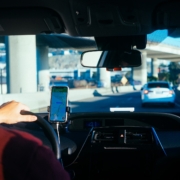Wayfair CEO Niraj S. Shah recently told analysts that the Wayfair brand-business – home furnishings and décor – is
“… clearly demonstrating that the Wayfair model is inherently profitable and that there is considerable opportunity in front of us to rapidly drive further margin expansion, while investing for future growth.“
About Wayfair’s progress on its “pathway to profitability,” announced August 2022, Mr. Shah said,
“… these efforts have resulted in increasing market share and a significant reduction in operating expenses versus last quarter, getting us to nearly adjusted EBITDA breakeven in Q1. And we’re excited to share that we expect to have positive adjusted EBITDA in the second quarter.”
On the surface, this three-pronged strategic approach of “driving customer and supplier loyalty, nailing the basics and cost efficiency” seems fairly generic. However, based on a review of Wayfair’s brand-business and people-centric approach, underlying the three-pronged approach is a focus on brand-business leadership marketing.
Leadership is not the same as management. “Management” means to “take charge or take care of….” Managements means “to handle, to direct, to control the actions.” A manager is a person who controls and manipulates resources and expenditures.
“Leadership” is a different role than “manager.” Leadership means “to guide or direct.” A leader achieves success through passion, persuasion, persistence, conviction, commitment, drive and diplomacy.
Leadership marketing is internal but its effects are external. Leadership marketing is built on five principles:
- Inspiration—Defining a motivating vision and goals. What is the organizational ambition? Why should we care?
- Education—Clarifying why this new vision is important. What will we have to do differently to succeed? How will we do it?
- Influence—Impacting the work of others through guidance, experience, and expertise rather than relying only on direct command and control. The leader must be a collaborative authority bringing people together (unifying the teams) for productive action on behalf of the brand.
- Support—Not just hoping that people will perform differently, but by providing the necessary training and tools. We provide tangible and emotional encouragement and reinforcement to help people resist the cultural tendencies to return to old habits.
- Evaluation—Providing regular progress reports based on relevant metrics. We also mean recognizing and rewarding people who produce.
Leadership marketing is not about command and control. Leadership marketing is about creating an internal environment where team members are energized, motivated and activated to do their best on behalf of the brand-business.
It is leadership’s responsibility to direct, to guide, to support, to inform, to educate, to facilitate, to influence, to evaluate and learn, and above all, to inspire. Leaders succeed through the actions of others whom they influence. A leader’s greatest achievements come not by telling managers what to do, but by influencing managers to do the right things in the right way producing the right results.
There are two essential elements that bind a brand-business together. One is articulating the brand-business promise and how the brand-business wishes its customers feel as they experience brand. The other is the way team members are inspired, educated, influenced, supported and evaluated as they create the brand-business experience.
- Articulating the brand-business promise and desired customer experience
Leadership marketing requires a stated purpose. Wayfair’s purpose is:
“We’re here to help everyone, anywhere create their feeling of home. We give you the power to create spaces that are just right for you. We provide true partnership to help you define your vision. We empower you to create spaces that reflect who you are, what you need, and what you value, so that you and the ones you love can feel right at home.”
Wayfair believes in this mission. Wayfair believes in its people. And, so, Wayfair reinforces and reiterates the essence of its brand-business throughout the organization.
A desired customer-perceived experience is articulated via three to five specific, defining words or phrases. And, for each word or phrase, there is a definition. Since different people have different ways of describing customer feelings, it is absolutely essential to have a common language. A common language creates consistency, in every market in which the brand-business does business, regardless of geography.
A great construct for identifying the desired customer experience is to think of customer feelings and definitions as part of a flower. In the center of the flower is the brand-business’ brand essence. Each petal surrounding the center includes one desired experiential element with its definition.
Wayfair has a brand-business essence that encapsulates its brand promise. This essence is Built For Home. This is at the center of everything Wayfair does for its customers. It is not a slogan. It is an organizational, aligning short-hand statement capturing the very core of the brand-business.
Built For Home is expressed through four drivers of the desired customer experience and their definitions as follows (visit the website):
Expertise in Home
Home is where we started, and it’s our number one priority. We’re experts at getting you the products you want most and are champions for your home needs. If you’re looking for guidance on selection, sizing, inspiration, and more, we’re here and ready to help in the way that works best for you.
Unparalleled Selection
We’ve got what you need, carrying the widest and deepest selection, so you can find the one thing that reflects you, your life, and the people you share it with.
Tangible Value
Whether you want to spend a little or a little bit more, we make sure it’s just what you want – right value, right quality, and free shipping. And if it isn’t, we’ll help make it right.
Seamless Experience
Wherever you are, we make it easier to shop, purchase, and get home furnishings, appliances, and more. We provide a great experience online and off. Whether your order is big or small, you can expect to get it fast, on time, and just right.
- Galvanizing Team members to Create and Deliver the Promise and Desired Customer Experience
For galvanizing Wayfair team members, there are the brand-business’ people principles which are underpinned by three key aligning elements:
Great People
Great people have diverse perspectives but share a commitment to respect, a love of solving hard problems, and a spirit of having fun through the hustle.
Great Ideas
Great ideas come from anywhere within our walls and are grounded in both data and instinct, inspired by what we see in the world, and often fully bespoke and homegrown.
Great Ambition
Great ambition is what drives us. We’re in constant pursuit of doing better – by our customers, by our people, and by our community.
According to Wayfair, these three elements anchor the people principles. Wayfair’s people principles deliver against the five critical components of leadership: inspiration, education, influence, support and evaluation.
Relentless Customer Focus
Delivering an exceptional customer experience drives everything we do. We invest in understanding our customers and partners. We are all in customer service.
Deliver Results With Agility
We prioritize work that drives long-term value. We execute with urgency, learn from failure, and nimbly pivot. The outcomes of our efforts are impactful, measurable results.
Use Good Judgement
We are bold and confident, never reckless. We make reasoned, calculated decisions based on data, critical thinking, and pattern recognition.
Build the Best Team
We lead by setting the bar high, articulating clear goals, and diving deep. We hire, develop, and leverage only the best. Our leaders continually reevaluate and strengthen their teams and do not shy away from hard decisions. We expect and demonstrate excellence.
Collaborate Effectively
We invest in cross-functional global partnerships that maximize impact and minimize duplication. We prize collaboration in all interactions – with our teammates, stakeholders, and suppliers. We disagree, align, and commit. Effectiveness and efficiency in collaboration are required.
Respect Others
We earn and show respect, treating our teammates and partners with empathy and inclusion. We presume good intent while prioritizing impact. We balance confidence and candor with humility and kindness.
Be an Owner
We are Wayfair first. We act on what’s best for the company, ahead of team or individual goals. We spend every dollar as if it is our own. We take pride in Wayfair’s success while planning the next win. We always think long-term.
Innovate & Improve
We are not limited by precedent. We boldly challenge the norm. We continually identify opportunities to innovate, improve, and simplify. We value incremental improvements, but we also look for game-changing breakthroughs.
Adapt & Grow
We value adaptability and self-reflection. We find opportunity in every change, experience, and mistake. We are committed to continuous self-improvement.
Leadership marketing is about coherently, consistently managing the brand-business ina quality manner. Effective leadership marketing is not merely about message and media management; it is about brand-business management.
Brand-business leadership management is fundamentally about attracting more customers who purchase more often and become more loyal, generating more sales and becoming more profitable. Brand leadership management is about generating value for customers and creating value for the company. To increase shareholder value, a brand-business must generate customer-perceived value. To build brand-business value, it is essential to manage the relationship between what customers are willing to pay in terms of their costs relative to the experience they receive for those cost expenditures multiplied by trust..
When asked by an analyst why Wayfair was doing so well relative to competition, CEO Shah replied,
“As to the why are we doing better than competitors, I think it’s less about what the competitors are doing, and it’s more about what we’re doing. And, so, when we mentioned that recipe, again, great availability, fast delivery, great retail prices and then kind of coupling that with all the things we’re known for around customer service, an emotive shopping experience and product discovery and being tailored for home and kind of proprietary delivery advantage on heavy bulky items.”
It is clear from Wayfair’s CEO, that the brand-business is strengthened by its commitment to leadership marketing.
Leadership marketing requires that ideas be borderless. Wayfair believes this, saying ideas can come from anywhere. Specifically, that “No person, no geography has a lock on idea generation. Wayfair endorses the challenge leverage the power of ideas. Powerful ideas do not care where they come from.”
Leadership marketing at Wayfair allows teams to have the freedom to innovate and improve within the framework of the brand-business’ mission, customer-perceived brand-business experience and it people principles.
Of course, CEO Shah has stated that financial discipline and operational excellence are critical components of Wayfair’s pathway to profitability. But, Wayfair is also committed to making the brand-business a place where customers will shop more frequently and enjoy the benefits of Built for Home.










